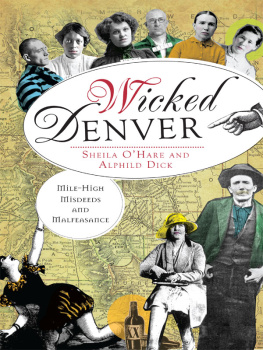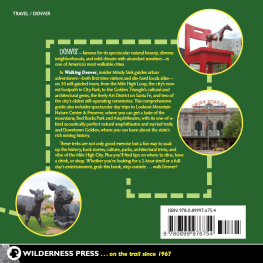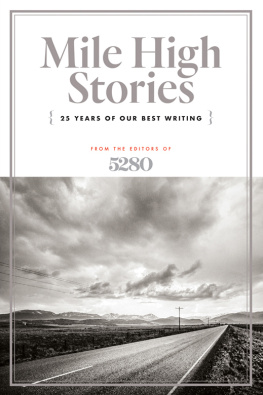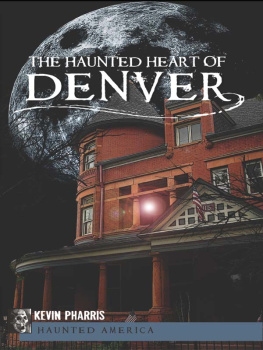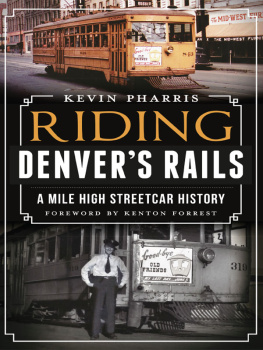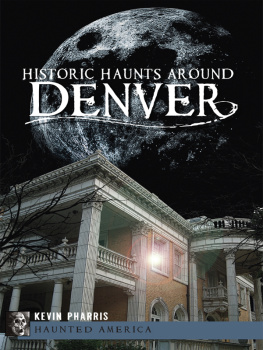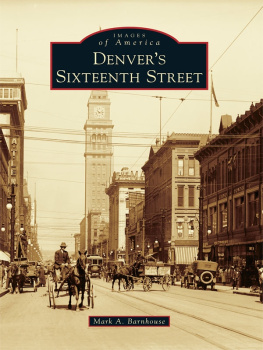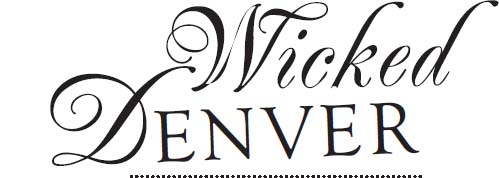

Published by The History Press
Charleston, SC 29403
www.historypress.net
Copyright 2012 by Sheila OHare and Alphild Dick
All rights reserved
First published 2012
e-book edition 2012
Manufactured in the United States
ISBN 978.1.61423.667.2
Library of Congress CIP data applied for.
print ISBN 978.1.60949.153.6
Notice: The information in this book is true and complete to the best of our knowledge. It is offered without guarantee on the part of the authors or The History Press. The authors and The History Press disclaim all liability in connection with the use of this book.
All rights reserved. No part of this book may be reproduced or transmitted in any form whatsoever without prior written permission from the publisher except in the case of brief quotations embodied in critical articles and reviews.
Contents
Introduction
Denver, without doubt, is the wickedest place, according to its population, on the globe.
Silverton Standard, March 5, 1904
First, an explanation of what this book is and what it is not. Wicked Denver is in no way a comprehensive guide to crime in the city and county. Rather, it is an attempt to focus on some of the lesser-known but representative offenses of the time period selected (roughly, 1870 to 1930). It is unapologetically a partial and idiosyncratic selection; our approach is episodic rather than comprehensive and continuous. Nonetheless, we believe that the cases and themes discussed in the book are worthy of further examination and contextualization; within the constraints of our format, we believe that readers will find the material interesting and sometimes surprising. Some cases have drawn little attention from previous historical researchers, possibly because they involved sexual offenses, prominent families or unique circumstances; a few are better-known but too relevant to omit.
Denver, first a part of Arapahoe County and then, in 1902, established by referendum as the city and county of Denver, has been interpreted flexibly here to include the metropolitan area; thus readers will find references to a few cases that arose in the adjacent Adams (also formerly part of Arapahoe County) and Jefferson Counties. The chapters are based on persistent themes in news reportage over the period: poisonings, domestic killings, juvenile offenses, street and saloon life, money disputes, murder-suicides, insanity and unsolved murders, as well as a glance at some routine lesser offenses (larceny, forgery and so on).
Most of the cases discussed here involve homicides. A very brief discussion of sentencing laws in the period may be helpful. Colorados mandatory capital punishment law for first-degree murder was enacted in 1883, repealed in 1897 and restored in 1901. The repeal, some scholars have argued, was driven by the states desire to shed its lawless frontier image; the 1901 reinstatement was based on the theory that the state-sanctioned penalty would prevent vigilantism and lynchings (the particularly gruesome lynching of John Porter in Limon in 1900 was influential in the decision). After 1901, first-degree murder could be punished by death or life imprisonment. Defendants in homicide cases over the period tended to be charged with the generic murder, though first-degree (premeditated) murder, second-degree murder and voluntary or involuntary manslaughter were the statutory choices. Voluntary manslaughter encompassed killings in the heat of passion, arising from provocation; involuntary manslaughter encompassed unintentional homicides. Penalties for manslaughter were, not surprisingly, much lighter, ranging from less than a year to eight years.
Due to space limitations, detailed citations have been omitted. Denver newspapers (the Rocky Mountain News, the Post, the Republican and so on) are generally referred to without repetition of the location prefixes; non-Denver newspaper names are given in full.
Chapter 1
Saloons and Street Life
Saloons were community hubs in frontier cities, and Denver was no exception. Thomas J. Noels The City and the Saloon (1996) is the definitive source on the saloon culture of Denver. In the citys early life, saloons served multiple purposes as gathering placeshotels, business centers, restaurants, theaters and even mortuaries. As Noel noted, Denvers gender imbalance until 1870 (men outnumbered women six to one) contributed to the growth and vigor of the citys street life. Holladay Street (later renamed Market) was the citys red-light district. Some of the saloons, blackguards, madams and girls of Market Street are well known; here are some less familiar cases that are equally revealing of this side of Denver life.
HARRY TRAVILLA
A house of ill-fame is veritably an alluring gateway to hell.
The August 18, 1880 murder of Abram M. Marburger (aka Solomon), age unknown, a traveling salesman for Abel Brothers Tobacco Company, in Carrie Smiths bagnio (brothel) is a fairly typical example of an alcohol-fueled brawl. Harry Travilla (aka Henry R. Travilla, Travelli, Newman or Harry Hill), a twenty-three-year-old clerk, was Smiths lover. He had come to Denver in February from Leavenworth, Kansas. The St. Louis Globe-Democrat noted that he had been known there as a regular sport, driving fast horses, associating with bloods and fast women generally, and spending a good deal of money.
The incident occurred during a quarrel at Smiths establishment at 487 Holladay Street, and it received national attention. The Rocky Mountain News noted that it was almost impossible to get anything like a connected statement from the inmates of the houseit was very evident that the whole party knew a great deal more than they would tell. This reference included Smith and the girl who had been in a room earlier with Marburger, one Kitty Campbell. Reporters eventually extracted the story of one of the most ridiculous arguments to ever end in murder. Marburger was fanning himself with a small advertising fan; Campbell asked him to give it to her, and he refused. She grabbed the fan and ran off with it. He pursued her and took it back but was angry and erupted into a tirade. Smith interceded and struck Marburger with an empty beer bottle pulled from a basket near the door. Marburger struck her slightly, and she fell over against the casing of the door. Then a partially dressed man rushed down the stairs, carrying a .44-caliber revolver. He shot Marburger in the head, and the victim died at the scene.
The shooter was Travilla, and he ran through the back door and disappeared (not, the papers noted, taking the time to dress or put on his boots). The women were held as accessories. Smith was a small woman of blonde proclivities, and, while seemingly very quiet in her demeanor, has the reputation of being a degenerate woman who has threatened to shoot more than one man. Campbell, a brunette with a very dissipated face, was also reported to have struck Marburger with empty bottles.
An editorial in the News bemoaned the presence of such bagnios in Denver, stating:
It is fearfully rough on any man to get killed in a den of prostitution, for it advertises the fact that he has been to such placesA house of ill-fame is veritably an alluring gateway to hell. It is the shame and disgrace of our commercial life that they are chiefly sustained by the patronage of commercial drummers [traveling salesmen] and their country customers. Drummers who are virtuous and reliable men often find themselves compelled to show their customers the town, and to be able to do so must be on familiar terms with the leading courtesans. It was this necessity of his occupation that furnishes the only extenuation we can think of for poor Marburger
Next page
